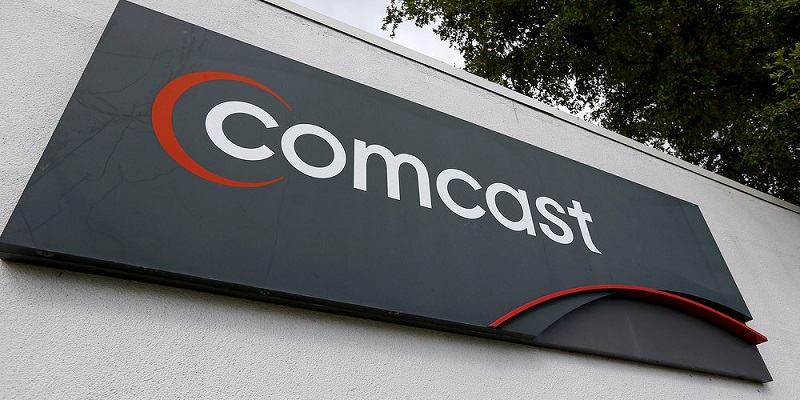Over 1.8 Million Comcast Subscribers Would Be Hit With Data Cap Overages
A huge number of Comcast subscribers are about to get hit with high overage charges on their internet service. Here’s why:
While Comcast continues not worrying too much about cord cutting as a general competitor to their core business, a few recent changes make it obvious they intend to increase revenue from streaming television.
Recently, there have been several key announcements that Comcast intends to continue rolling out their trial program of placing data cap overage fees on customers who exceed 300GB a month. Advertised as a way to get “unlimited streaming data” Comcast intends to charge customers $10 per 50GB extension past this cap, or $30-35 more a month for unlimited bandwidth, depending on their region.
While 300GB sounds reasonable to the average consumer, after all most are indoctrinated by a precedent set by cell phone carriers who charge us for data limits as low as 1GB, it’s only going to become easier to rapidly hit this cap as internet connections and video qualities improve. Comcast’s general comment thus far has been effectively, “Don’t worry about it! Most of our customers won’t even come near to this cap, only those pesky data hogs.” The nonchalant nature of this tone should be reason for pause.
Running the numbers
Comcast has 22.8 million broadband internet customers, and under Comcast’s own admission, 8% routinely go over the new 300GB limit. With that in mind, over 1.8 million current Comcast customers will see overage fees if the internet service provider continues their intended roll-out across all markets.
If even half of these 1.8 million people opt to upgrade their internet service to the unlimited package, we’re talking about a potential increase of $350 million in annual revenue, all from existing subscribers.
How about the other 92% of customers? Is there reason for worry here? Services often increase their price for the heavy users. It’s also not uncommon to see an inflation in cost over time, Comcast certainly isn’t immune to this. Netflix even had to announce a price increase recently.
But it seems curious that the number was set at 300GB. Why not a number considerably higher if the objective was really to stop those taking advantage of some imaginary system? 300GB is well within reach of the normal consumer.
Will you be affected?
We reported several months ago that the average Netflix subscriber spends upwards of 90 minutes a day watching shows and movies on Netflix. Assuming a standard mix of SD, HD and Ultra HD, Netflix reports that the average hour of Netflix streaming ranges in the 3-7GB range. Right off the bat then, average Netflix consumption is eating up almost 100GB of data a month per household, a third of the cap alone.
This does not take into account other streaming services such as Hulu and Amazon Prime, YouTube videos, music on Spotify, streaming on mobile devices attached to your home wifi and more. When calculating the individual usage habits of the average high speed internet customer, the total monthly data usage average reaches between 160-200GB a month relatively easily, and this number is rapidly increasing.
Great, so Comcast is right, the average customer won’t see any extra charges despite these new caps, at least in the short term. But the number of people affected is going to grow rapidly as internet speeds get faster. We fully expect this initial “8% affected” rate to double within a year. Recently, Comcast announced complete gigabit roll-out by 2018. And in the meantime, even with increases to 75MB/s speeds, it’s not going to take long for a large percentage of users to hit 300GB a month. For example, with a better connection, Netflix can stream the highest quality video, often using up to 7GB an hour, and video quality across all streaming services is only going to improve as well. An active digital household is going to hit 300GB on a monthly basis in no time.
“What better way to collect that lost revenue from cancelled television subscriptions than by throttling data usage with expensive overage charges on digital streams.”
As anyone who understands data usage will tell you, there isn’t a large difference between pumping 300GB of data and 1TB of data through existing infrastructure, so this 300GB number was chosen specifically to capture at least some revenue-boosting share of the streaming market. It’s just too perfect. As the AP states, 300GB is just the right amount to glean some extra revenue from the streaming TV crowd, many of whom are likely without standard television packages themselves. What better way to collect that lost revenue from cancelled television subscriptions than by throttling data usage with expensive overage charges on digital streams.
We believe that this 300GB number has been set specifically to get consumers used to a number that right now seems good enough, but soon will be well within normal data usage. As more and more people turn to streaming video for media consumption, it seems reasonable that the number of people affected by a cap will drastically increase, resulting in a fantastic new revenue stream for Comcast’s cable business.
It’s starting to make sense why they’re perhaps less concerned with cord cutting now, isn’t it?

